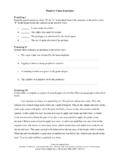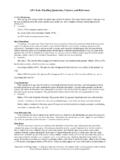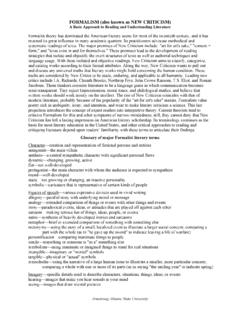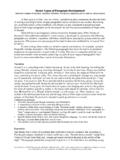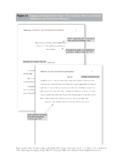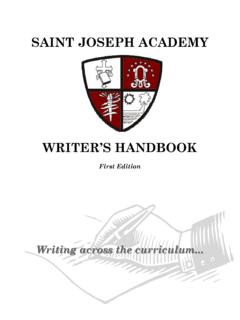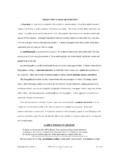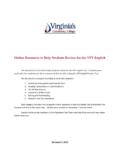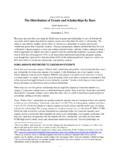Transcription of Research Paper Guidelines - Armstrong University
1 Definition: A literary Research Paper is a compilation and interpretation of factual materials and of critics opinions on a specific subject in a literary work. Since the selection of materials is filtered and processed by the writer, the Paper reflects the author s views also; hence, it is both objective and subjective in content. Because the Paper expresses the writer s opinions, s/he must find a topic of interest from a work that s/he has read and a topic related to a poem, short story, play, or novel that you have : The work which is under study is called the primary source; the critical and historical references are called secondary a tentative thesis to establish your purpose for Research . This is what you are trying to support. After some reading, you may need to refine your thesis a working bibliography a list of available sources.
2 Consult books of literary criticism, the MLA International Bibliography, and other books and periodicals related to your subject and author. If your topic is current, check the Reader s Guide to Periodical Literature. In addition, remember that much information is available on computer. Microfiche catalogs have replaced the card catalog in most libraries. Microforms contain information on a screen. Make copies of information that you think is notes. There are two methods of note-taking: index cards and highlighting your copies. Select the one that works better for you unless instructed otherwise. If you select to use highlighting, use a different color highlighter for each topic within your subject (comparable to main points on the outline). an outline using the information assembled from the a rough draft inserting parenthetical citations within the text unless instructed otherwise.
3 This method of acknowledging sources has replaced footnotes and end notes because it is immediately accessible to the reader. Use Guidelines from The Modern Language Association Handbook for Writers of Research Papers (MLA), or some other source as assigned, for citations and works cited. a Works Cited (bibliography) following MLA Guidelines or any other reference the Paper aside; proofread the final the final Paper GuidelinesSample OutlineNotice that no correct number of letters or numbers exists; the only determining factor is the number of points you need to make for the required length of your information connecting the reader to the Main subpoint example or detail either your insight or a critic s comment paraphrased or directly quoted Never start a sentence with a quote that you have not )First comment on support b)Second comment on example or detail (your comment on supporting detail from a critic)a)First commentb)Second comment example or example or subpoint (same as A, B above)At this point continue with D, if Main subpoint Comment on subpoint (only one comment on this detail) As in the above example, use a dash after a point if it is followed by only one detail or sub example only one comment on this example.
4 Hence use the dash, not an a by examplea)Commentb)Comment Continue with the same sequence alternating numerals and letters until you have completed outlining all of your material. Thinking reactions to the source insights about the Research critical thinking Affirm that the thesis has been provenResearch Paper Guidelines

